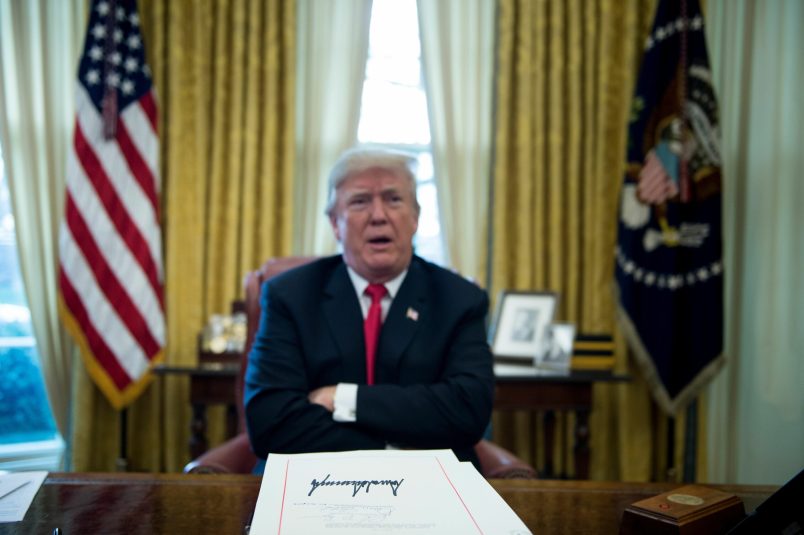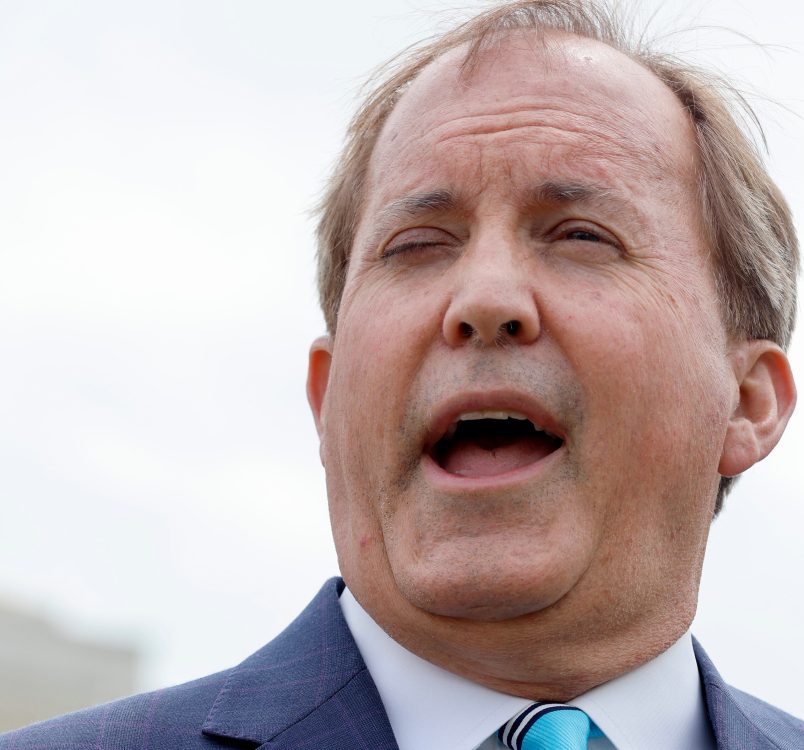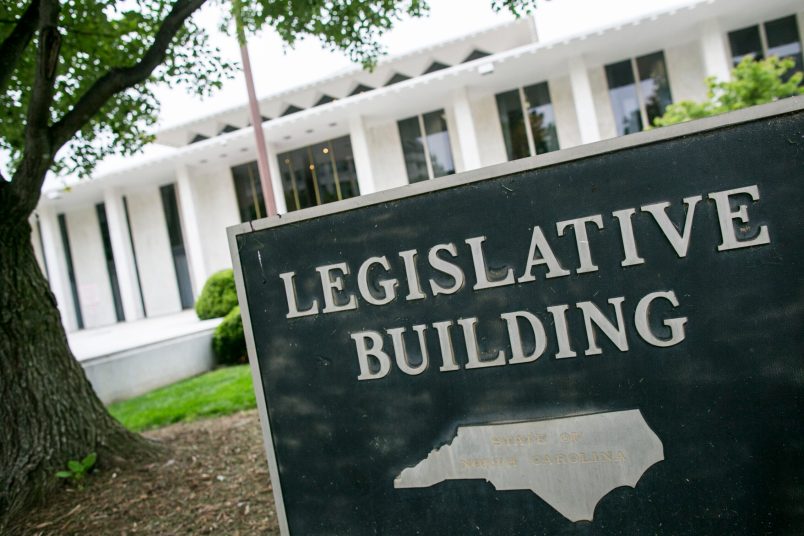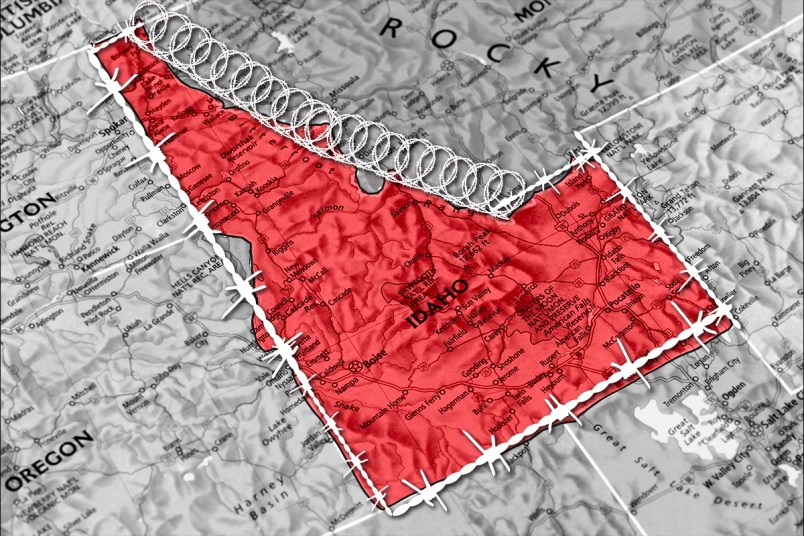After years and countless court battles spent shielding them, President Trump’s tax returns are finally out.
The New York Times got ahold of years of both President Trump’s personal returns and those of his businesses through 2017, revealing massive write-offs, huge liabilities set to come due soon, and inexplicably huge losses throughout.
The release raises fascinating questions about the President’s business career and the potential legal implications of what may charitably be described as his tax avoidance strategies.
Here are five points on how to make sense of the revelations.
That’s a lot of losses.
It’s difficult to appreciate the scale of losses that Trump booked on his tax returns over the years.
One property alone — the Trump Doral golf course in Florida — recorded $65 million in losses for the year of 2013.
In sum, the New York Times reported, Trump booked hundreds of millions in losses from 2000 to 2017.
But for Trump, the self-declared “king of debt,” it’s an old story, the magnitude of which is only just becoming known. Under tax law, the losses allow Trump to write off the otherwise massive tax bill that he would owe to the federal government.
“It is possible that, if you sat down for a long time with a sophisticated forensic accountant, they would be able to show you that actually this is just basically expensing of property,” said Brian Galle, a former federal tax prosecutor and professor at Georgetown Law, referring to a practice by which real estate owners offset their tax bill with reductions in the value of their property. “But the losses are certainly bigger than I’m accustomed to seeing.”
Are these losses for real?
Without looking at the underlying documents, it’s not clear what revenues Trump and his businesses had. But a close look at what losses Trump declared raises nagging questions.
Part of this has to do with depreciation — a cost that allows real estate owners to write off the annual decrease in value of their properties on their tax bill.
The other portion comes from examples like Trump Doral. The IRS treats the losses and gains of a group of businesses with a single owner on a net basis, meaning that a huge loss at Trump Doral could obviate the tax burden of profits elsewhere in his companies.
Michael Kridel, a forensic accountant, told TPM that the aggressive strategy raised real questions around how Trump might have qualified for tax benefits given to so-called “active investors,” which Trump can only claim in investments where he’s actively been performing a service to keep the cash flow coming, as opposed to passive income where little or no work is required to keep the money going.
To Eric Allen, a former auditor and assistant professor of accounting at UC-Riverside, the scale raises the question of whether the losses were legitimate costs involved with doing business, or part of a strategy to pare down losses with no underlying economic reason.
“As an auditor, you want to see the economic support: can you show me the economics of the transactions that generated these losses?” Allen said. “Were these real economic losses? Or something to take advantage of the tax code?”
It’s not normal to have this many unsecured loans of this size.
At a certain point, the questions start to veer into different territory.
While it’s clear that Trump was able to get a low tax bill through aggressive write-off strategies (including the now famous $70,000 haircut “business expense”), it’s less clear what money he had coming in which allowed him to do this.
The Times reported that Trump received huge amounts of money in the form of loans secured on a personal guarantee. More than $400 million of those liabilities come due over the next four years, the Times reported, though it’s not clear if the lenders in question (their identities are unknown) would be willing to restructure.
But, tax experts told TPM, the fact that it’s a personal guarantee — in which lenders could go straight for Trump’s bank account were he to default on the loan, and not some underlying piece of property — ends up being crucial for his tax burden.
Allen, the former auditor, said that personal guarantees meant the loans qualified as recourse debt which, in turn, allowed Trump to deduct the losses in a massive way.
“People will spend a lot of money trying to structure things in order to maximize the amount they can benefit from losses if they’re generated,” Allen said. “I think the question that people are having is the magnitude.”
This all feeds into persistent questions about what money may have been flowing in, and why.
But, again, that’s a lot of trouble to go to in order to simply reduce a large tax burden.
“It’s certainly a joke among white collar prosecutors that when you see a restaurant with nobody in it, what a great money laundering front,” joked Galle, the former tax prosecutor. “But the the question is to what extent they’re counting operating losses, it did seem like they were larger than could be explained.”
And, it raises the question of what the underlying source of revenue was for which Trump was furiously trying to reduce his tax burden. Or, rather, what money was flowing into his business empire that itself would have obviated tens of millions in losses.
The most generous outflows follow a pattern that we first saw with Fred Trump.
Many of these questions could be resolved by an IRS audit — which has been taking place for years, but hit a snag on a $72.9 million refund that Trump collected 10 years ago.
A decision on that has been repeatedly delayed, even after Trump became President, triggering a separate requirement that mandates an annual audit of the President’s return.
The situation is extremely unusual, said Kridel, the forensic accountant.
“That the refund from 10 years ago is still being audited is nearly impossible by statute,” he said. “Nobody would sign extensions on statutes of limitations for that long on that issue.”
An audit could also examine other peculiarities, some of which hearken back to previous arrangements involving Fred Trump.
The Times previously reported that the elder Trump was able to pass on large amounts of money to the current President by making him a contractor on his businesses and paying him large sums for the work.
From Sunday’s Times investigation, it appears that Donald Trump has been using a similar arrangement with his daughter, Ivanka. For that, Trump has paid Ivanka for work as a contractor on his projects.
Galle said that it created two benefits: it transferred the money to Ivanka without coming under the estate tax, while also creating another tax deduction for the Trump organization for its use of a consultant.
He added that the scheme is “very popular in family business because you can overpay your kids to do work for you” which accomplishes the same thing as transferring wealth between family members.
When asked what opinion the story gave him of Trump’s accountants, Galle chuckled.
“He must have a lot of trust in them,” he said.
This story has been updated.






